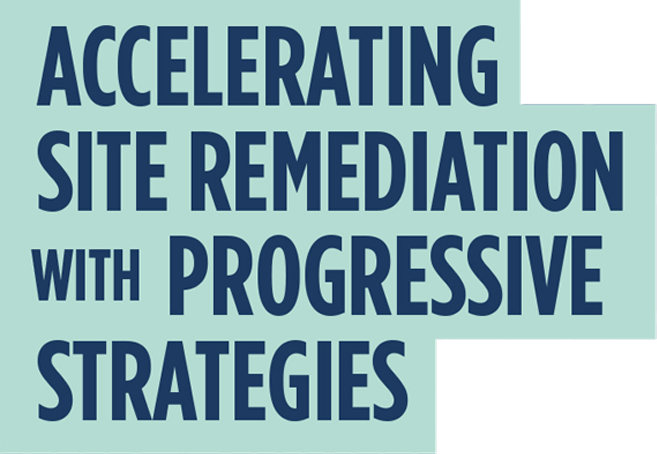


Focused, data-driven solutions that deliver more cost-effective, predictable results.
Explore how this integrated approach is challenging the status quo for complex site remediation.
Speeding the Pace of Cleanup
Over many years, grain fumigant solvents leaked from a tank at an active grain elevator into the underlying soil and groundwater. Remediation would be complicated not only by the extent and nature of the contamination, but also by its difficult-to-access location. Thanks to a multipronged, innovative remediation strategy, efforts to clean up the site are drawing to a close.
Design Optimization Reduces the Cost and Uncertainty of Remediation
Groundwater extraction and treatment — or pump and treat — is making a comeback in the remediation industry, primarily due to technological advancements that focus this remedy to meet project objectives more predictably and at a significantly lower cost.
Process-Based Conceptual Site Models
Complex site remediation requires a centralized hub of site-specific information that is updated and analyzed to inform each step of the way. A process-based conceptual site model unleashes the full value of the project dataset and allows decisions to be informed by accurate representations of processes that will directly impact performance, cost and schedule.
Why We Need a New Approach to PFAS Remedial Investigations
Remediating per- and poly-fluoroalkyl substances (PFAS) in groundwater presents numerous challenges, necessitating a site characterization workflow that differs from the industry standard. An effective approach uses 3D subsurface mapping — by way of Environmental Sequence Stratigraphy — to target the PFAS groundwater sampling program and address critical data gaps.
Geologic Model: Establishing the Foundation for Remediation Success
For complex contaminated groundwater sites, the uncertainty related to inherent geologic complexities of the subsurface is the main barrier to project success. Geology is the static framework that primarily controls groundwater flow and contaminant migration — which is why a sound geologic model is required for remediation success.
Progressive Remediation Strategies: A Next-Generation Approach to Remediating Complex Sites
The PROGRESS approach employs a process-based conceptual site model that accurately incorporates and quantifies relevant subsurface processes to improve remedy selection, design, implementation and optimization. Coupled with a digital site management tool, this approach can provide a higher level of CSM efficiency and utility, directly impacting remediation performance, cost and schedule.



